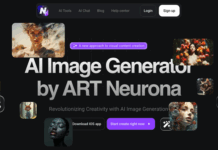The landscape of web development is constantly evolving, driven by advancements in technology, changing user behaviours, and emerging industry trends. As we look ahead to 2024 and beyond, web developers and businesses need to stay abreast of the latest developments and anticipate future trends shaping the future of web development. This comprehensive guide will explore key trends and innovations expected to revolutionise web development in 2024, offering insights and predictions for the industry’s future.
Progressive Web Applications (PWAs) Take Center Stage:
Progressive Web Applications (PWAs) continue to gain traction as a leading technology trend in web development, offering users a native app-like experience directly through their web browsers. PWAs leverage modern web capabilities such as service workers, push notifications, and offline access to deliver fast, reliable, and engaging user experiences across devices and platforms. In 2024, we expect to see increased adoption of PWAs by businesses seeking to enhance user engagement, improve performance, and reach a wider audience with their web applications.
Embracing the Jamstack Architecture:
The Jamstack (JavaScript, APIs, and Markup) architecture has emerged as a popular approach to web development, offering scalability, security, and performance benefits for modern web applications. By decoupling the frontend presentation layer from the backend infrastructure, Jamstack enables developers to build fast, dynamic web experiences with minimal overhead and complexity. In 2024, we anticipate continued growth in Jamstack adoption as developers embrace its flexibility, modularity, and ability to integrate with various third-party services and APIs.
Rise of Headless CMS Solutions:
Headless Content Management Systems (CMS) are gaining momentum as a preferred choice for managing content in modern web development projects. But what is headless CMS? Unlike traditional monolithic CMS platforms, headless CMS decouple content management from the presentation layer, allowing developers to retrieve content via APIs and display it dynamically across various frontend frameworks and devices. In 2024, we’ll see more businesses adopting headless CMS solutions to streamline content workflows, improve developer productivity, and deliver personalized, omnichannel experiences to users.
Augmented Reality (AR) and Virtual Reality (VR) Integration:
The integration of Augmented Reality (AR) and Virtual Reality (VR) technologies into web development is poised to transform how users interact with digital content and immersive experiences online. From AR-enhanced product visualizations to VR-powered virtual tours and interactive storytelling, AR and VR have the potential to revolutionize the way we consume and engage with web content. In 2024, we can expect to see more websites and web applications leveraging AR and VR technologies to deliver immersive, interactive experiences that captivate and engage users in new and innovative ways.
Voice User Interfaces (VUIs) and Conversational Interfaces:
Voice User Interfaces (VUIs) and conversational interfaces are reshaping the way users interact with websites and web applications, enabling natural language interactions and hands-free navigation. With the widespread adoption of virtual assistants and smart speakers, users are increasingly comfortable using voice commands to search, shop, and interact with digital content. In 2024, we’ll see a growing emphasis on designing voice-first experiences and integrating conversational interfaces into web development projects to cater to the rising demand for voice-enabled interactions.
Enhanced Accessibility and Inclusive Design:
Accessibility and inclusive design are becoming increasingly important considerations in the future of web development, as businesses strive to create digital experiences that are accessible to users of all abilities and backgrounds. In 2024, we anticipate a greater emphasis on designing websites and web applications that prioritize accessibility features such as keyboard navigation, screen reader compatibility, and semantic HTML markup. By embracing inclusive design principles, developers can ensure that their digital products are usable and accessible to everyone, regardless of their physical or cognitive abilities.
Micro Frontends and Component-Based Architectures:
Micro Frontends and component-based architectures are gaining momentum as scalable and maintainable approaches to building modular, reusable web applications. By breaking down monolithic frontend codebases into smaller, independent modules or microservices, developers can achieve greater flexibility, agility, and scalability in their web development projects. In 2024, we’ll see continued adoption of micro frontend architectures and component-based development patterns as businesses seek to accelerate development cycles, improve code maintainability, and scale their web applications more effectively.
Blockchain Integration for Security and Trust:
Blockchain technology is increasingly being explored for its potential applications in web development, particularly in digital identity management, secure transactions, and decentralized applications (DApps). By leveraging blockchain technology, developers can enhance web applications’ security, transparency, and trustworthiness, mitigating risks such as data breaches, fraud, and tampering. In 2024, we expect greater experimentation and innovation in blockchain integration for web development, as developers explore new use cases and opportunities to leverage distributed ledger technology in their projects.
Personalization and User-Centric Experiences:
Personalization is becoming a cornerstone of effective web development, as businesses seek to deliver tailored, user-centric experiences that resonate with individual preferences and behaviors. By leveraging data analytics, machine learning, and AI-powered algorithms, developers can create dynamic, personalized experiences that adapt to users’ interests, browsing history, and demographic information. In 2024, we’ll see a continued focus on personalization in web development, with businesses investing in technologies and strategies to deliver more relevant, engaging, and impactful user experiences.
Sustainability and Green Web Practices:
Sustainability and green web practices are emerging as important considerations in web development as businesses recognise the environmental impact of digital technologies and seek to reduce their carbon footprint. Developers can play a key role in promoting sustainability in the digital landscape, from optimising website performance and minimising energy consumption to using renewable hosting solutions and eco-friendly design principles. In 2024, we anticipate a greater emphasis on sustainability in web development, with businesses prioritising eco-friendly practices and adopting green technologies to build more environmentally conscious websites and web applications.
Localisation and Regionalization:
As businesses expand their online presence globally, the importance of localisation and regionalisation in web development becomes increasingly apparent. Tailoring web content, language, and user experiences to specific geographic regions and cultural preferences can enhance user engagement, improve conversion rates, and foster brand loyalty. In Australia, a vibrant and diverse city known for its multicultural community, web developers play a crucial role in creating localized web experiences that resonate with local audiences. By understanding unique needs and preferences, web Development experts can design websites and web applications that reflect the city’s dynamic culture and support its thriving digital ecosystem. Whether it’s integrating local landmarks, cultural references, or language variations, web development in Australia embraces the spirit of diversity and inclusivity, enriching the online experience for users across the city and beyond.
Conclusion:
As we look ahead to 2024 and beyond, the future of web development promises to be dynamic, innovative, and transformative. From progressive web applications and Jamstack architecture to augmented reality, voice user interfaces, and blockchain integration, the trends shaping the future of web development reflect users’ evolving needs and expectations in an increasingly digital world. By staying abreast of these trends and embracing new technologies and methodologies, developers can position themselves at the forefront of innovation and drive positive change in the web development landscape.
Find a Home-Based Business to Start-Up >>> Hundreds of Business Listings.

















































